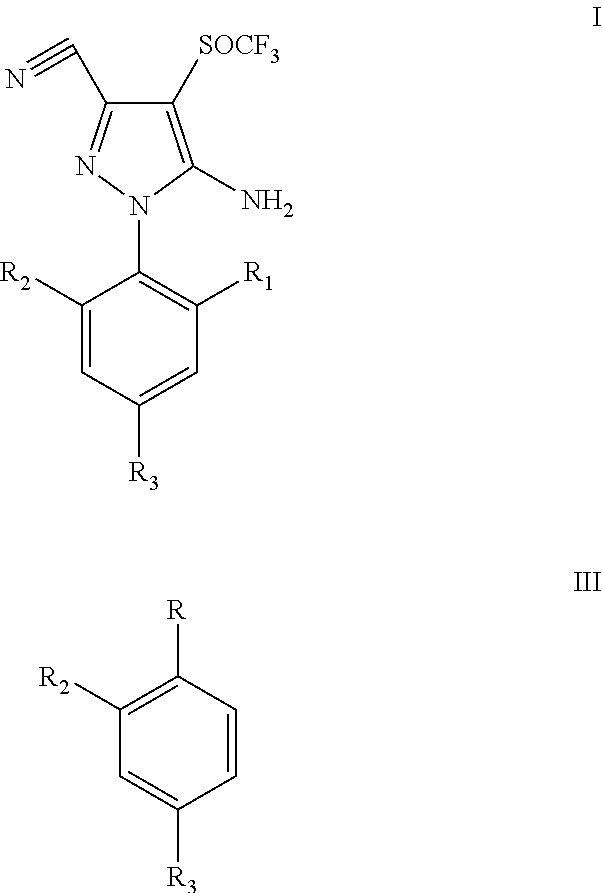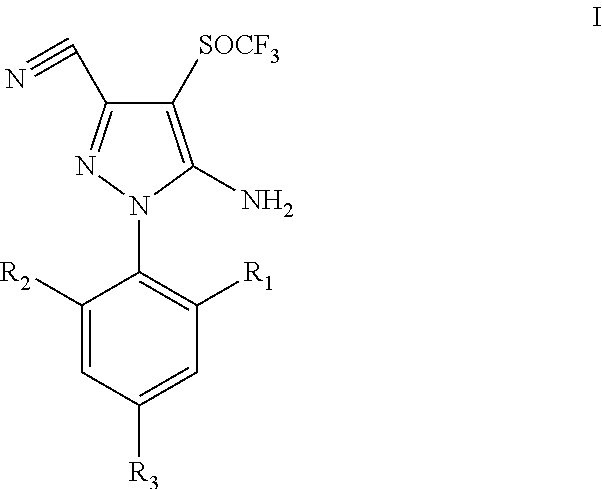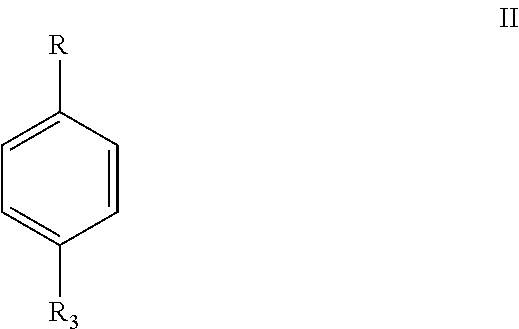Process for synthesis of fipronil
a technology of pyrazole and pyrazole, which is applied in the field of process for preparing trifluoromethylsulfinyl pyrazole derivatives, can solve the problems of difficult preparation, high cost, toxic or rare oxidizing reagents,
- Summary
- Abstract
- Description
- Claims
- Application Information
AI Technical Summary
Benefits of technology
Problems solved by technology
Method used
Image
Examples
example — 1
Example—1
[0068]N-methylpyrrolidone (1050 ml) was charged in an autoclave along with 102 g anhydrous activated potassium fluoride, 377 g 3,4-dichlorobenzotrifluoride was added. Ammonia (158 g) gas was passed in the reactor from the pressure pot at ambient temperature. The content of the reactor was heated to 245° C.-250° C. over a period of 2 hours to get reactor pressure of 30-32 kg / cm2. Excess NH3 was fed from the pressure pot to maintain the reactor pressure at 38-40 kg / cm2 at 245-250° C. liquid temperature. Reaction mixture was maintained at 245-250° C. and at 38-40 kg / cm2 pressure for further 8 hours. Reaction mixture was cooled to ambient temperature and NH3 was vented and recovered. Reaction mixture was filtered and on fractionation gave 77% yield of 2-chloro-4-trifluoromethylaniline and 13% yield of 2-chloro-5-trifluoromethyl aniline based on consumed 3,4-dichlorobenzotrifluoride.
example — 2
Example—2
[0069]N-methylpyrrolidone (815 ml) was charged in an autoclave along with 291 g 3,4-dichlorobenzotrifluoride and 118 g of calcined potassium fluoride. Pressure pot was fitted to the autoclave. Ammonia (213 g) gas was fed into a reactor. Ammonia (158 g) gas was passed into the reactor from the pressure pot at ambient temperature initially and then the mixture in the autoclave was gradually heated to 245-250° C. liquid temperature and further maintained at temperature 245-250° C. and pressure of 38-40 kg / cm2 for 6 hours by feeding ammonia gas to maintain the desired reactor pressure. After fractionation the yield of 2-chloro-4-trifluoromethylaniline was 75.2% based on 3,4-dichlorobenzotrifluoride consumed.
example 3
[0070]3,4-Dichlorobenzotrifluoride (75.4 g) was added to 210 ml of N-methylpyrrolidone along with 30.45 g of calcined potassium fluoride & 1.73 g cuprous chloride and 6 g ammonia in an autoclave. Reaction mixture was maintained at 235° C. and pressure of 25-26 kg / cm2 for 6 hrs. After work up and fractionation the yield of 2-chloro-4-trifluoromethyl aniline was 64% based on 3,4-dichlorobenzotrifluoride consumed.
PUM
| Property | Measurement | Unit |
|---|---|---|
| temperature | aaaaa | aaaaa |
| temperature | aaaaa | aaaaa |
| temperature | aaaaa | aaaaa |
Abstract
Description
Claims
Application Information
 Login to View More
Login to View More - R&D
- Intellectual Property
- Life Sciences
- Materials
- Tech Scout
- Unparalleled Data Quality
- Higher Quality Content
- 60% Fewer Hallucinations
Browse by: Latest US Patents, China's latest patents, Technical Efficacy Thesaurus, Application Domain, Technology Topic, Popular Technical Reports.
© 2025 PatSnap. All rights reserved.Legal|Privacy policy|Modern Slavery Act Transparency Statement|Sitemap|About US| Contact US: help@patsnap.com



